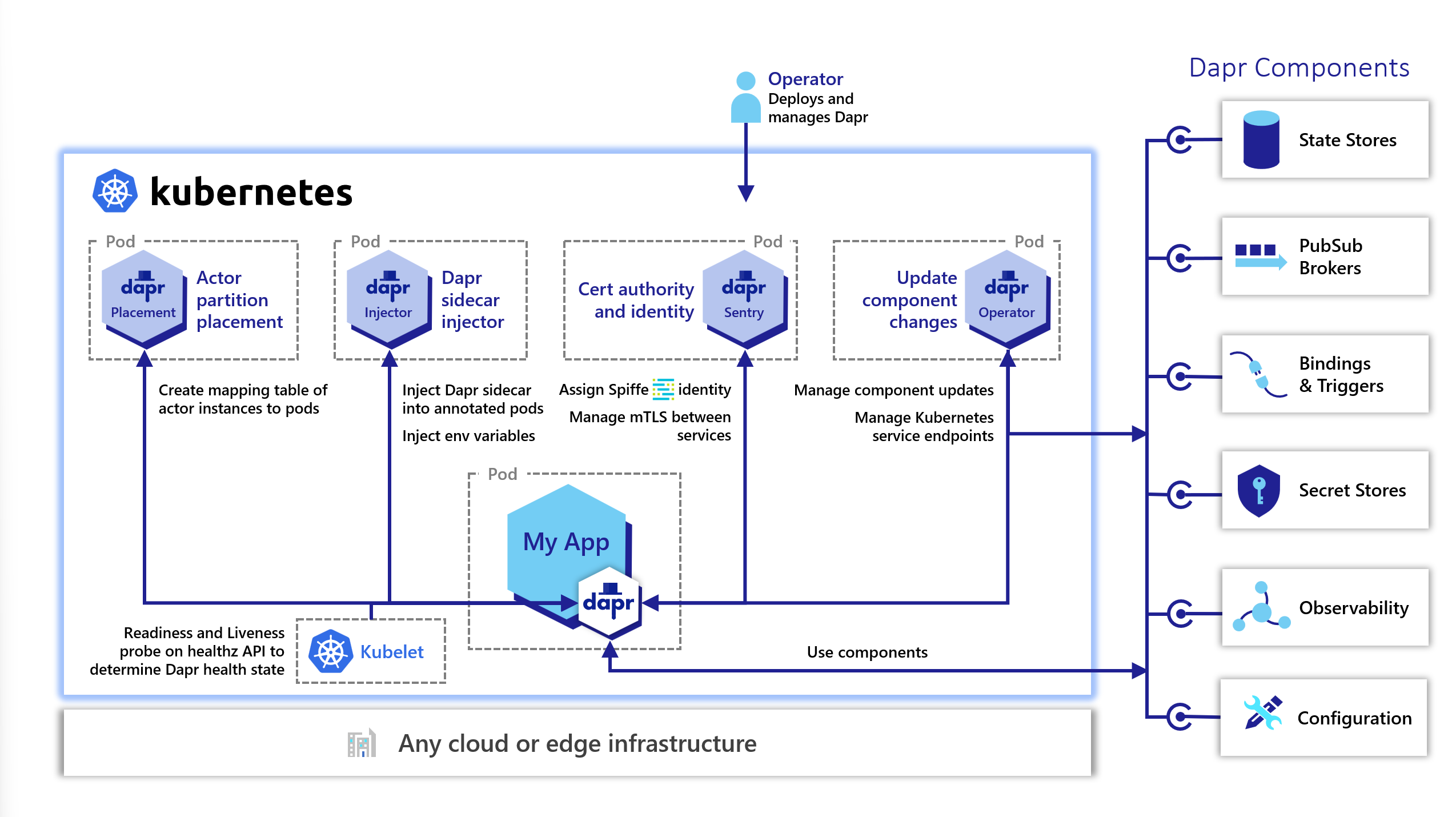The documentation you are viewing is for Dapr v1.9 which is an older version of Dapr. For up-to-date documentation, see the latest version.
Sidecar health
Dapr provides a way to determine its health using an HTTP /healthz endpoint. With this endpoint, the daprd process, or sidecar, can be:
- Probed for its health
- Determined for readiness and liveness
The Dapr /healthz endpoint can be used by health probes from the application hosting platform (for example Kubernetes). This topic describes how Dapr integrates with probes from different hosting platforms.
When deploying Dapr to a hosting platform like Kubernetes, the Dapr health endpoint is automatically configured for you.
Note
Dapr actors also have a health API endpoint where Dapr probes the application for a response to a signal from Dapr that the actor application is healthy and running. See actor health API.Health endpoint: Integration with Kubernetes
Kubernetes uses readiness and liveness probes to determines the health of the container.
The kubelet uses liveness probes to know when to restart a container.
For example, liveness probes could catch a deadlock, where an application is running but is unable to make progress. Restarting a container in such a state can help to make the application more available despite having bugs.
The kubelet uses readiness probes to know when a container is ready to start accepting traffic. A pod is considered ready when all of its containers are ready. One use of this readiness signal is to control which pods are used as backends for Kubernetes services. When a pod is not ready, it is removed from Kubernetes service load balancers.
Note
The Dapr sidecar will be in ready state once the application is accessible on its configured port. The application cannot access the Dapr components during application start up/initialization.When integrating with Kubernetes, the Dapr sidecar is injected with a Kubernetes probe configuration telling it to use the Dapr healthz endpoint. This is done by the “Sidecar Injector” system service. The integration with the kubelet is shown in the diagram below.

How to configure a liveness probe in Kubernetes
In the pod configuration file, the liveness probe is added in the containers spec section as shown below:
livenessProbe:
httpGet:
path: /healthz
port: 8080
initialDelaySeconds: 3
periodSeconds: 3
In the above example, the periodSeconds field specifies that the kubelet should perform a liveness probe every 3 seconds. The initialDelaySeconds field tells the kubelet that it should wait 3 seconds before performing the first probe. To perform a probe, the kubelet sends an HTTP GET request to the server that is running in the container and listening on port 8080. If the handler for the server’s /healthz path returns a success code, the kubelet considers the container to be alive and healthy. If the handler returns a failure code, the kubelet kills the container and restarts it.
Any HTTP status code between 200 and 399 indicates success; any other status code indicates failure.
How to configure a readiness probe in Kubernetes
Readiness probes are configured similarly to liveness probes. The only difference is that you use the readinessProbe field instead of the livenessProbe field:
readinessProbe:
httpGet:
path: /healthz
port: 8080
initialDelaySeconds: 3
periodSeconds: 3
How the Dapr sidecar health endpoint is configured with Kubernetes
As mentioned above, this configuration is done automatically by the Sidecar Injector service. This section describes the specific values that are set on the liveness and readiness probes.
Dapr has its HTTP health endpoint /v1.0/healthz on port 3500. This can be used with Kubernetes for readiness and liveness probe. When the Dapr sidecar is injected, the readiness and liveness probes are configured in the pod configuration file with the following values:
livenessProbe:
httpGet:
path: v1.0/healthz
port: 3500
initialDelaySeconds: 5
periodSeconds: 10
timeoutSeconds : 5
failureThreshold : 3
readinessProbe:
httpGet:
path: v1.0/healthz
port: 3500
initialDelaySeconds: 5
periodSeconds: 10
timeoutSeconds : 5
failureThreshold: 3
For more information refer to:
Feedback
Was this page helpful?
Glad to hear it! Please tell us how we can improve.
Sorry to hear that. Please tell us how we can improve.